Want to get into hiking without making the biggest beginner hiking mistakes? As someone who didn’t get into the outdoors or hiking until age 23, I’ve made my fair share of hiking mistakes and have had to learn many lessons the hard way. Moving to Colorado from the midwest taught me so much in terms of how to show up to the trailhead prepared and confident. These 10 tips will help you make sure you avoid putting yourself in uncomfy, and sometimes scary situations like I’ve experienced in the past.
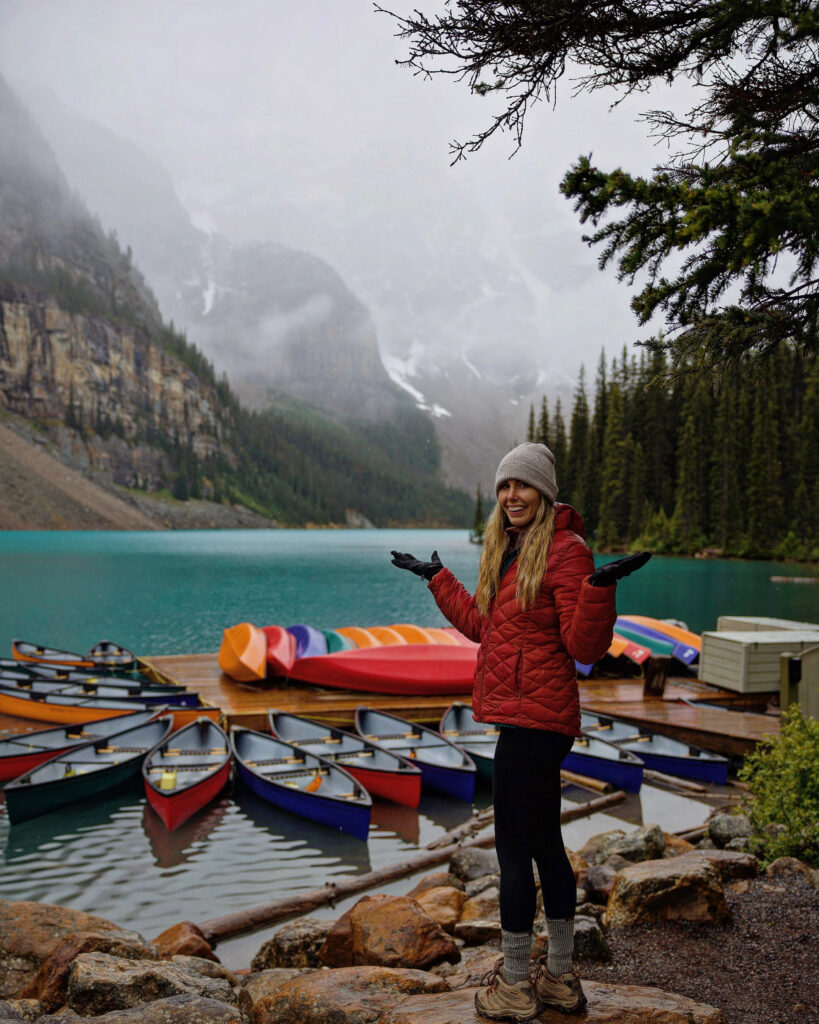
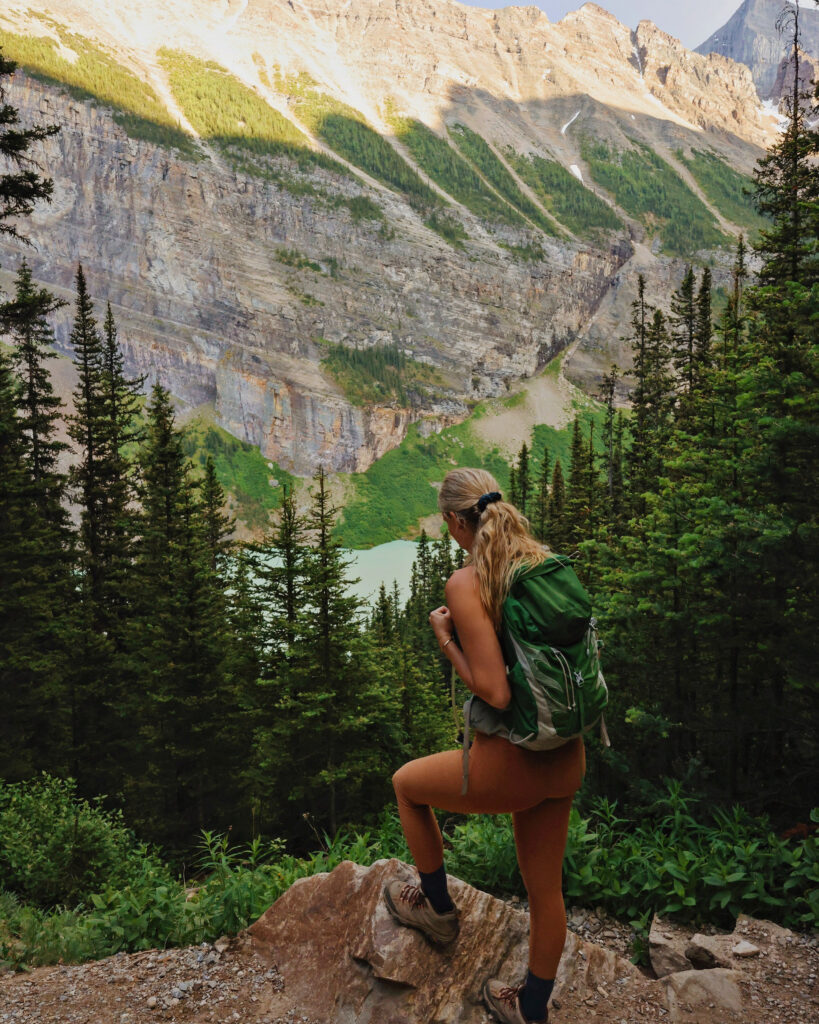
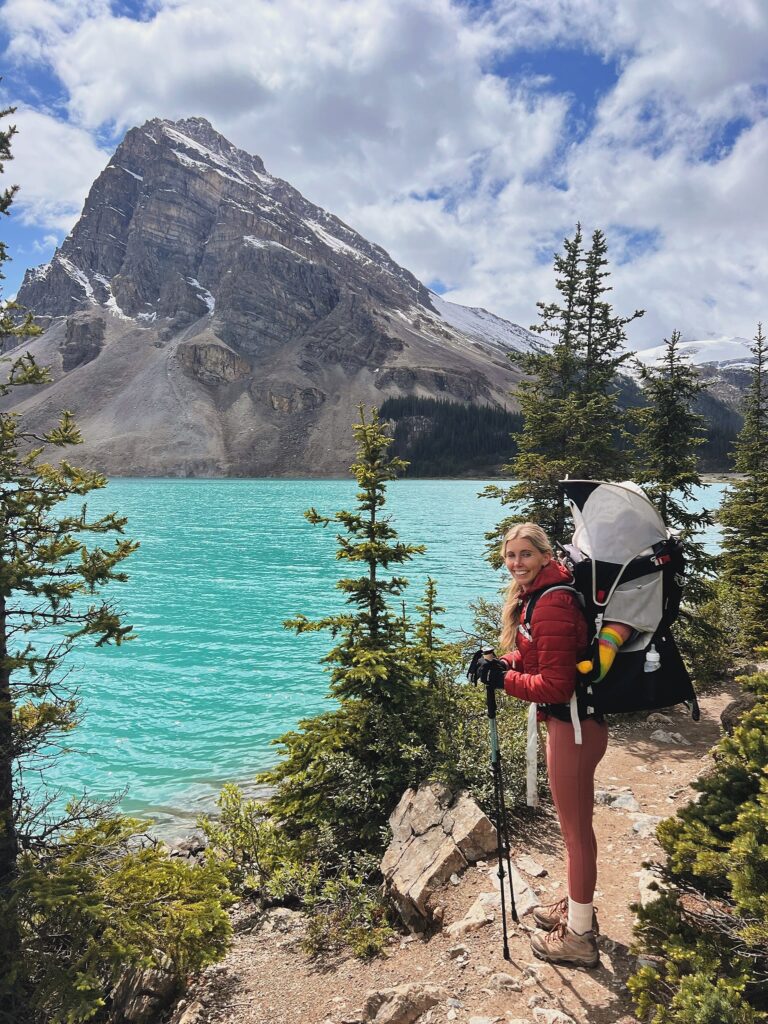
- Not being weather aware for the altitude of the hike & not bringing the necessary layers
This is one of the biggest things I’ve experienced since moving to Colorado, particularly since there is such a big discrepancy between the altitude of different regions in the state. For example, when I first started hiking I was living in Denver around 5,000ft elevation and would take off to go hiking in the Colorado mountain ranges at about the 7,000-10,000ft range with the occasional 14er, which results in drastic changes in weather. At lower elevations it could be 70 degrees and blue skies and then I’d show up to the trailhead and it would be sleeting – no joke. So looking into the weather where you are heading, not just where you are, and packing a range of different clothing layers including a rain jacket is really important. That can also even be the case for certain desert hikes as well, depending on seasons and time of day. Wherever you choose to venture out, show up prepared!
- Not packing enough water
If you’ve ever been on a hike and run out of water with a ways to go, especially on a hot day, you understand why this is not something you want to mess around with. In general, always try to have a full water bottle and backup Nalgene or Camelbak. Along with this, don’t just assume that your hydration gear is always full, I’ve made the mistake of thinking my Camelbak still had adequate water leftover from the prior hike only to find out that it wasn’t enough. Always better to be safe than sorry, especially in the water department. Another great way that you can stay on top of water supply, as long as the trail has sources, is to have a water filtration system with you in your pack – especially on longer hikes.
- Not bringing sunscreen
I’ve made this mistake way too many times, to the point that it’s almost embarrassing. Take it from me, just pack the sunscreen every time, especially when hiking higher elevation trails with high exposure. While you still want to make sure to apply before you leave the house, between sweating and time spent on trail, chances are you are going to need to reapply. Nothing feels worse than having shoulders that are sunburned while you are carrying a pack and getting scorched by the sun. Bringing hats and sunshirts is always a great idea as well. Sure, a slight tan is always nice in summer, however, trust me when I say it’s not worth leaving the trailhead looking like a lobster.
- Not downloading the map beforehand
Even if you expect it to be a heavily trafficked and well marked trail, downloading maps beforehand is still always a good idea. Even in National Parks, I’ve had situations where trails are not well marked and there’s not really people around. This can be a scary feeling not really knowing where you are or if you are on the right path back to your trailhead. This is why I highly recommend downloading maps on something like a Garmin inReach, or your phone as long as you have ample charge. You can also opt to bring paper maps and a compass. No matter which resources you choose to use, be sure they are ready to go before leaving home and you familiarize yourself with how to use them beforehand.
- Assuming there would be service on a hike
It’s a little unnerving when all of the sudden you lose service and don’t have communication or, as previously talked about, your navigating tools (download, download, download). No matter where you are hiking it’s always a necessary step to let someone know where you’ll be heading beforehand, and a timeframe of when you’ll be gone. Of course, nowadays there are amazing devices like the Garmin inReach, but technology can still fail and it is just a good idea to communicate your plans with friends or family before hitting the trails.
- Not bringing enough calorie dense food on long hikes
I can remember specifically hiking a 14er in Colorado and being vastly unprepared, especially in the food department. I think I brought a few granola bars, and thought that would be enough. I ended up on the trail for about 9 hours, so needless to say I was running on fumes. Look ahead at trail reviews and mileage, or even use the trusty naismuths rule calculator to figure out your estimated time on trail so you know what to pack with you in terms of nutrition. For a full rundown on my new and improved trail nutrition strategies check out my podcast episode – Trail Nutrition For Hiking & Backpacking – which includes how to plan meals for your hikes, how to fuel up beforehand, and replenish yourself afterward.
- Not reading condition reviews, parking details, and overall hike info beforehand
This one can be really helpful with all the fine details and being sure you are prepared for what the hike has to offer. Things like parking information, trail conditions, shuttle systems, road conditions, fees, closures, etc. are all so helpful so you don’t waste your time only to show up and not be able to do the hike you were planning. I have experienced all sorts of scenarios regarding those things and having no idea ahead of time. This can really derail your planned adventures so I always recommend using AllTrails to do a quick check on what to expect. If there are no current updates on there, places like Facebook groups in the area can also be really helpful.
- Assuming trails would be clear of ice/snow by spring
This definitely pertains a little more to mountainous or higher altitude places, but from my experience here in Colorado, trails are most likely going to be really icy at higher altitudes all the way up until June. It may be fine in foothill regions a little earlier than that, however, I have been caught off guard by ice and snow lingering in the spring quite a few times. It’s up to you whether or not you want to still do the hike with gear like microspikes or snowshoes, but this is also where trail information is important so you know if the incline and terrain is safe to navigate in winter/spring conditions even with the right gear. Bigger treks like 14ers are definitely recommended to do in the summer rather than spring so plan your months accordingly.
- Not training properly in general – mainly doing HIIT
This mistake is exactly what led me to creating the Fit For Hiking Guides, which eventually led to my 1:1 Mountain Metabolic Method. Your mindset is what will carry you up mountains, but your fitness is what will determine the experience you have. It isn’t very enjoyable to be sucking wind, lagging behind, feeling like you’re going to pass out, or feeling weak on trail. Strategic hiking strength and cardiovascular endurance training will make a night and day difference in your experiences on trail. This doesn’t mean you need to be shredded or look like a bikini competitor to enjoy hiking, all shapes and sizes can enjoy the trails. But putting in specific training can help anyone to feel their best hiking their own hike.
- Not using poles for years! Especially on big declines.
I made this mistake often and kind of always brushed off how much poles actually help take pressure off your joints, especially when carrying kiddos or heavy packs up a trail. Now, I take them on almost every single hike I do, especially when it involves a steeper decline. They add stability, support, and balance to your hikes which is nice on any terrain, but especially loose rocky trails, or muddy and slick ones. Packing trekking poles with you really is a total game changer.
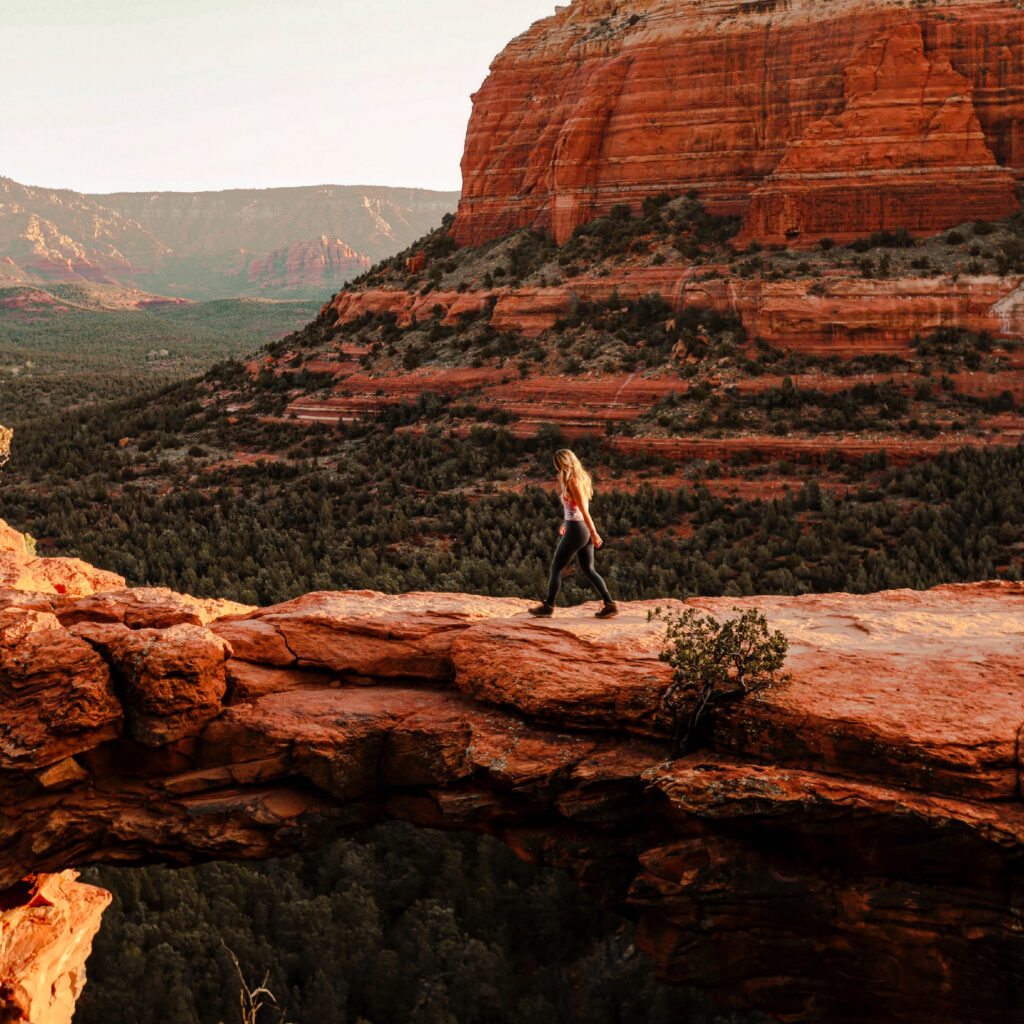
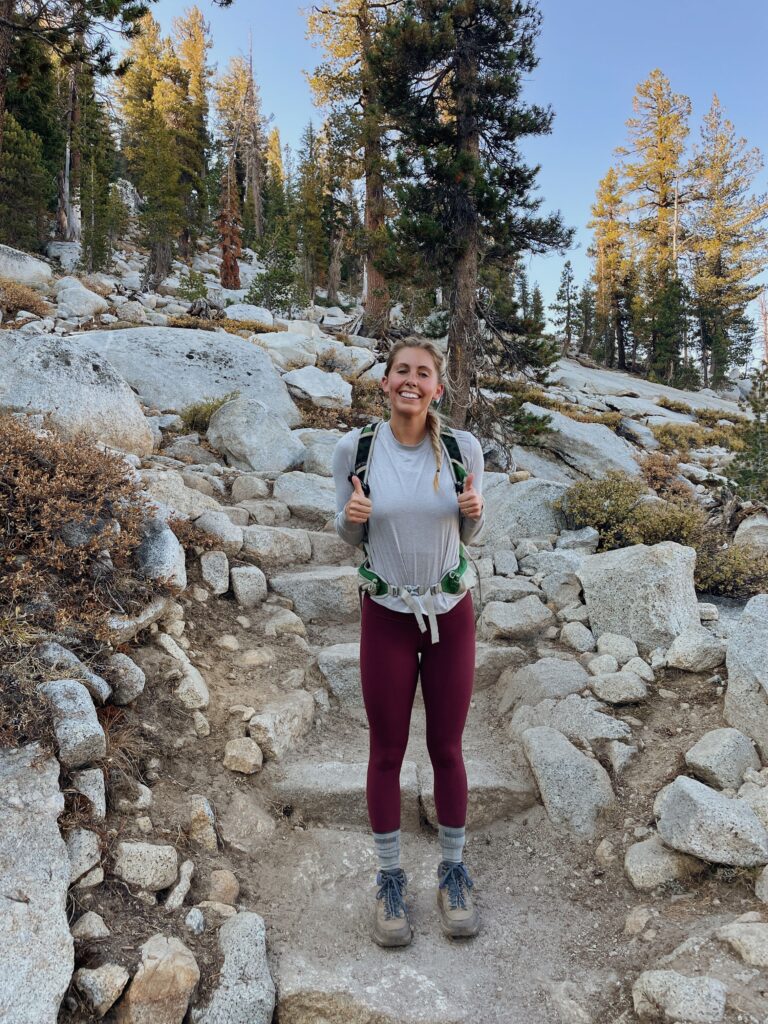
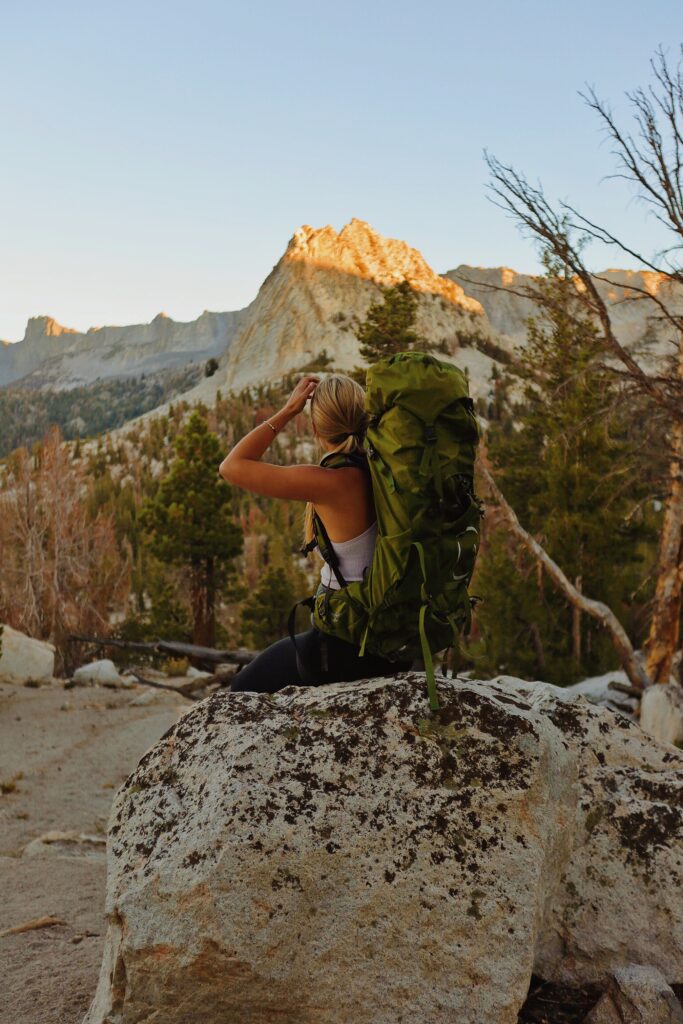
I hope no matter where you’re at in your hiking experience, you found some value in learning from these mistakes I’ve made. If you are new to the trails it can all seem like an overwhelming checklist, but before you know it, packing these things and doing these habits will feel like second nature and you’ll never leave home feeling unprepared.
Happy + Healthy Trails,
Bradee
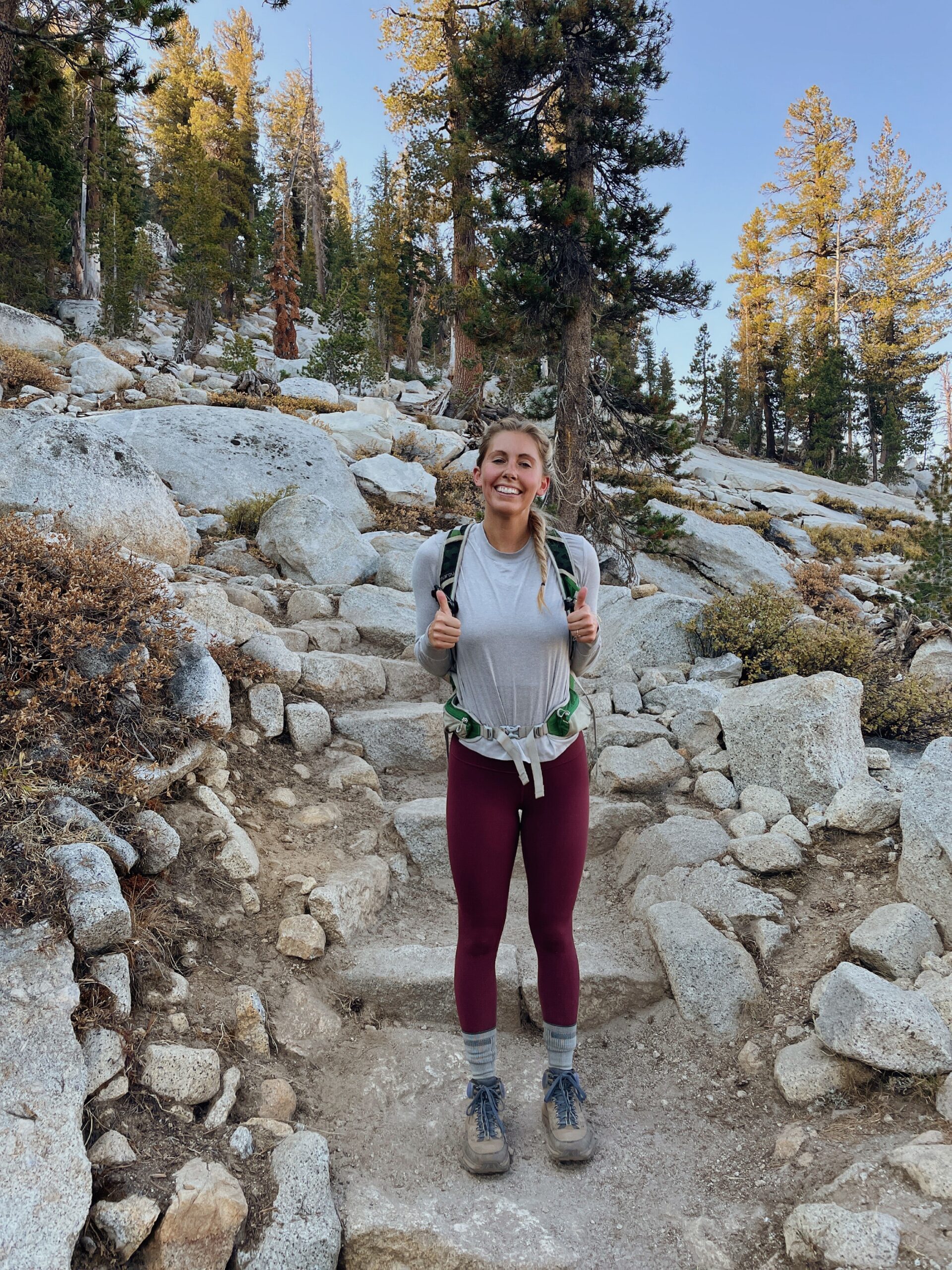
Be The First To Comment